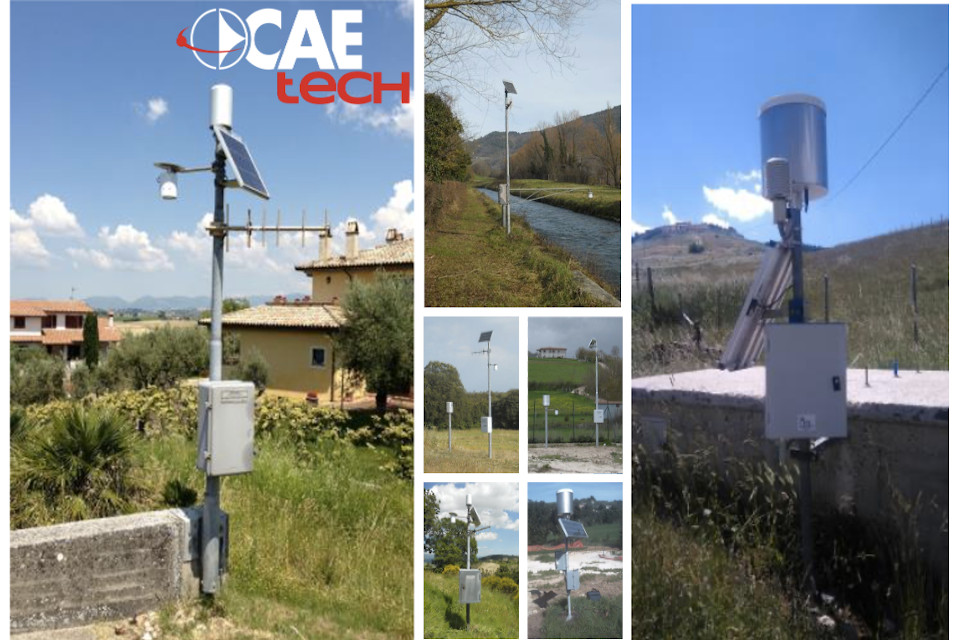Umbria, a future-oriented region
May 2021

It was back in 1639 when, in the Monastery of San Pietro in Perugia, Father Benedetto Castelli, according to the monastic "ora et labora" (pray and work) rule and enlightened by the teachings of Galileo Galilei, designed and conceived the first meteorological station with a rain gauge system: a sort of “pot” for collecting and measuring rainwater. Afterwards, the Father himself also performed interesting studies on water flows, that is, on the quantity of water that a river can carry.
It was also thanks to the collaboration with Father Castelli that Galileo came up with the invention of the thermometer and the enunciation of the principle of mechanics. Another pivotal event was the invention of the barometer by Torricelli, one of Father Castelli's disciples.
Much later, in 1983, the Water Resources and Hydraulic Risk Service of the Regional Hydrographic Service of Umbria was among the very first bodies in Italy that started the installation of an automatic hydrometeorological monitoring network with real-time operation, integrating therefore the activities of the National Hydrographic and Oceanographic Service.
CAE, which was the at the centerstage of the upgrade taking place in the early 1980s, has now proudly won the tender for the three-year ordinary and extraordinary maintenance, as well as the works for the expansion of the environmental monitoring network for civil protection purposes.
More specifically, during the maintenance period all system components will be substantially upgraded: sensors and automatic field stations, equipment and transmission network, software, servers and clients.
In 106 automatic remote measurement stations, in addition to the renewal of solar panels, the existing dataloggers will be replaced with the innovative and performing Compact Plus dataloggers, which are programmable, user-friendly and powerful thanks to the openness of their software and the use of standard protocols.
As far as the replacement of sensors, there will be adaptations for:
- water level sensors, from ultrasonic to ultra-modern WLR/L radars;
- rain gauges, replaced by PG10 and PG10/R with Zero Breakdown Technology;
- snow gauges, replaced by modern CAEtech ULM30/N;
- existing thermometers and hygrometers, replaced by the more efficient THS thermo-hygrometers;
- radiometers;
- anemometers, replaced by DV20/VV20;
- new image modules.
At the end of the expected upgrade, all the remote measurement stations will be equipped with both the RÆVO radio and a module capable of using the existing mobile networks. The dual transmission system will guarantee the maximum reliability, allowing full access to the field equipment.
However, it is thanks to the new radio designed by CAE that the network will be able to significantly evolve in terms of acquisition speed and protocol standardization. In fact, in addition to being extremely performing, the new device will transmit messages processed with several protocols, among which standard IP ones, such as CoAP, that will be implemented in the Regional system of Umbria.
At each measurement station, on the 11 repeaters of the regional system and at the Perugia power stations, the radio transmission modules will therefore be replaced with new RÆVO radio modules.
At the regional headquarters of Perugia, the construction of a new primary network control centre is also planned, based on a highly redundant 3-knots cluster server, on which a new generation of application SW will be installed, such as the powerful front-end Datalife, a potent tool for complete management of network stations and field repeaters, and AEGIS, a fully web-based platform for the cartographic and tabular analysis and display of the collected data.
Also at the client level, the CAE proposal provided for the supply of new high-performance workstations with high resolution triple monitors, new dual-monitor notebooks equipped with mobile routers and new tablets with the DroidMAPS app, capable of ensuring interoperability and full usability of data also “on-the-go” and outside the Perugia control centre .
In order to further increase system safety in all operating conditions, the CAE proposal will provide for the supply of a second Disaster Recovery control centre, to be installed in a geographical location separate from Perugia, that is the Regional Functional Centre of Foligno.
In normal operating conditions, this control centre, equipped with the same Datalife and AEGIS software as the primary centre, will constantly receive network monitoring data from Perugia and, in the event of a fault in the latter centre, will take over the management of the entire monitoring network, ensuring therefore continuity of service to all users connected to it.
The maintenance service offered is, as always, "turnkey", including precise guarantees on the availability of data in any weather situation and including 24/7 remote maintenance and assistance, with calibration and revision of the sensors at each scheduled or corrective maintenance intervention.
In this regard, the maintenance portal will also be updated: this is the tool through which all the activities carried out in the field and at the control centre are documented and available for consultation, in order to ensure the correct functioning of the equipment.
Back to the news index
